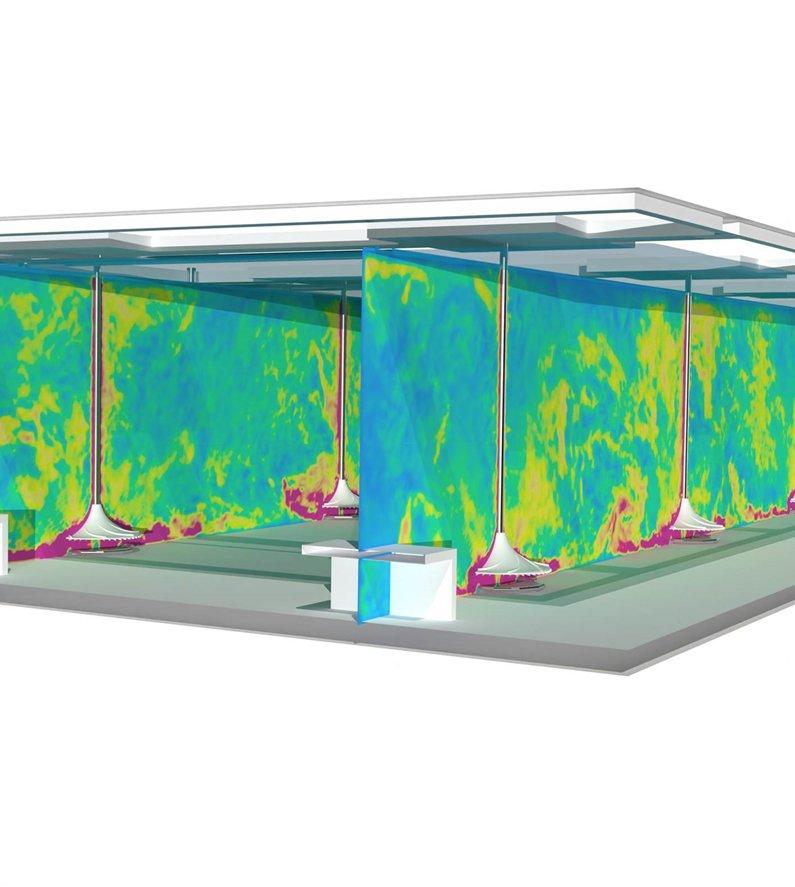The Origins of INVENT’s CFD Journey
In the 1990s, the foundation of INVENT by Dr.-Ing. Marcus Höfken signaled the rigorous application of fluid mechanics in wastewater treatment. Having its roots at the Department of Fluid Mechanics of the University Erlangen-Nuremberg under the leadership of Professor Dr. Franz Durst, INVENT was borne out of a genuine passion for fluid mechanics, combined with a rigorous scientific approach.
From its early days, INVENT recognized the potential of CFD simulations, leveraging its capabilities in collaborations with academic institutions. Recognizing its immense potential, the company soon established an in-house CFD department, which quickly evolved to cater exclusively to the intricacies of water and wastewater treatment. From modeling mixers with detailed CAD geometry to multiphase simulations for aerated tanks, INVENT was at the forefront, challenging conventions and elevating standards.
CFD in Wastewater Treatment: Bridging Theoretical and Practical Gaps
But what is CFD? At its core, Computational Fluid Dynamics (CFD) is the use of applied mathematics, physics, and computational software to model and visualize fluid flows. There are many examples: Aerated tanks, for instance, demand multiphase simulations. Such simulations can help predict the Standard Oxygen Transfer Rate (SOTR), a crucial metric in biological wastewater treatment. Additionally, understanding the movement and behavior of suspended solids and activated sludge is vital. CFD helps in modeling these phenomena, providing insights into particle trajectories, settling patterns, and more.
Furthermore, in stirred tank reactors or in pump stations, the effects at the water’s surface, often marked by turbulent behaviors and leading to vortex formation, can be complex. CFD simulations, by modeling these surface effects, assist engineers in designing and optimizing treatment processes.
As we delve further into the realm of wastewater treatment modeling, the emphasis on particular features and techniques becomes indispensable. Here’s why:
1. Rotating Turbomachinery: One cannot underestimate the importance of precisely modeling rotating turbomachinery. In wastewater treatment plants, these machines play pivotal roles, ensuring efficient flow circulation and solids suspension.
Accurate modeling ensures reliable representation of real pumping operation.
2. Multiphase Simulation for Aeration: Aeration is critical for the biological oxidation processes in the biological treatment of wastewater. Understanding intricate physics, such as bubble dynamics, is essential. Factors like bubble breakup, their eventual coalescence, and mass transfer are key to reliably predict oxygen transfer rate.
3. Sludge Floc Transport: Sludge flocs, or aggregated particles also require further investigation and careful modeling. When considering the multiphase simulations for their transport, a complex factor comes into play: rheology. As the concentration of these flocs increases, the fluid’s behavior deviates from the Newtonian ideal, adopting characteristics of non-Newtonian fluids. This alteration in fluid behavior, coupled with flocculation effects—where particles come together to form larger aggregates—adds layers of complexity to the modeling process.
However, a significant challenge remains. The behavior of biological compounds in wastewater cannot be explicitly modeled within fluid mechanical equations. This is where the role of a numerical-empirical approach becomes essential. By combine theory with empirical data, we ensure accurate results rooted in real-world observations and validations.
The potential applications of CFD in this arena are vast, spanning screenings, hydraulic dynamics, water distribution, and beyond. Think of anoxic tanks, clarifiers, oxidation ditches, anaerobic digesters – CFD has them all covered.
Tools and Collaboration
INVENT is always up to date when it comes to CFD technology. The M-STAR software, with its Lattice-Boltzmann approach for solving Navier-Stokes equations, offers advanced turbulence modeling techniques such as large Eddy Simulation. Powered by GPUs, it permits time-accurate dynamic simulations, providing an unparalleled insight into turbulent phenomena.
Turbulence, after all, is pivotal for mixing. The more accurately turbulence is modeled, the better the predictions related to mixing, a cornerstone in wastewater treatment processes. Yet, the true strength of INVENT’s CFD department lies not just in its superior software and hardware tools but in its persistent endeavor for numerical validation. By continually comparing simulation results with experimental data, either in collaboration with academic institutions or through onsite experiments at wastewater plants, INVENT ensures the highest fidelity in its CFD simulations.
At the end: the best CFD is much more than a simulation, is also continuous experimental validations and calibration using a numerical-empirical approach.
Conclusion
In a world where precision matters, the use of CFD in wastewater treatment is not a luxury but a necessity. As the industry demands more sustainable and efficient solutions, the bridge between theoretical simulations and experimental validations will be even more vital. INVENT will continue to follow this path and simulate the complex waters in the water and wastewater industry.
For more information watch the THINK Fluid Dynamix® website: https://think‐fluid‐dynamix.com/
INVENT Umwelt- und Verfahrenstechnik AG
Am Pestalozziring 21
91058 Erlangen
Telefon: +49 (9131) 690980
Telefax: +49 (9131) 6909899
https://www.invent-uv.de/
Marketing
Telefon: +49 (9131) 69098-0
E-Mail: aeisemann@invent-uv.de
![]()

